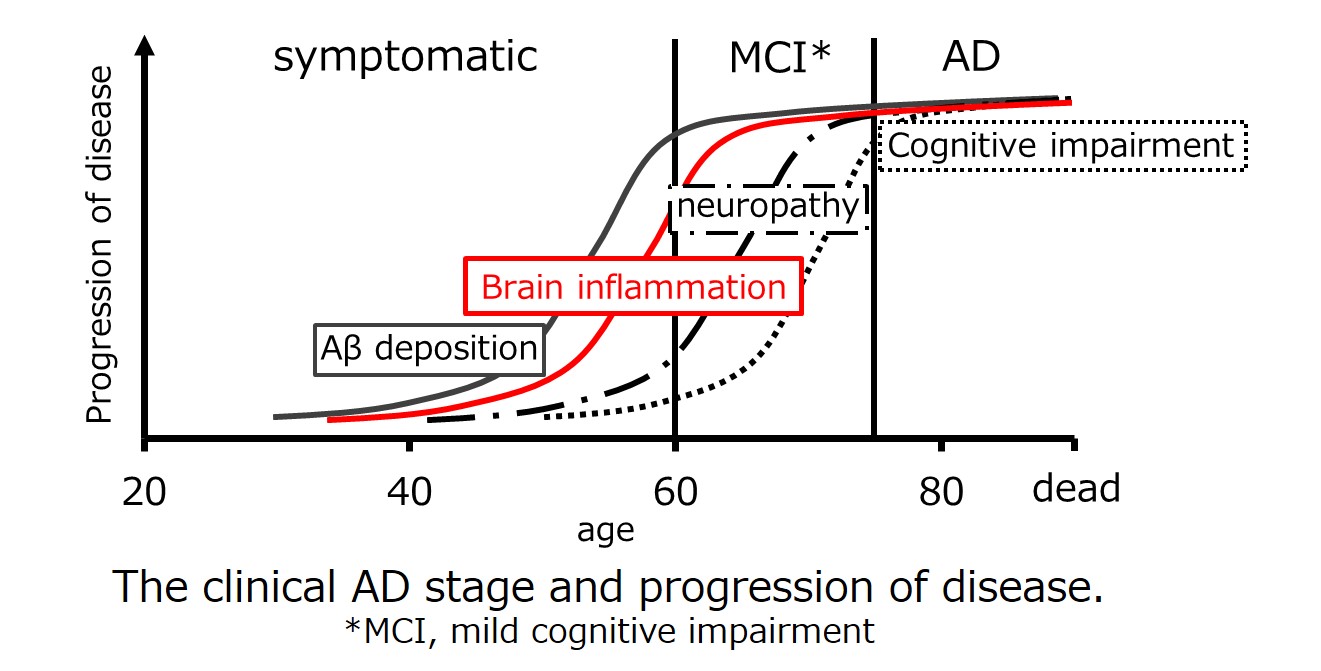Introducing a preclinical model for Alzheimer’s disease
We would like to introduce you to an Alzheimer’s disease model.
–About Alzheimer’s disease
Alzheimer’s disease is a progressive neurodegenerative condition that currently has no cure and accounts for the majority of dementia cases.
It is characterized by an accumulation of amyloid-beta, the main pathogen, in the brain and neuronal cell death due to neurofibrillary tangles which cause cognitive dysfunction.
In addition, the accumulation of amyloid-beta in the brain leads to the activation of immune cells and oxidative stress, which induces chronic neuroinflammation. The resulting neuroinflammation has been reported to promote the accumulation of amyloid-beta and neurological damage (Kinney et al. Alzheimers Dement (N Y). 2018; Sandireddy et al., Int J Endocrinol. 2014).
Along with conventional drugs that aid neurotransmission, therapeutic agents that remove the causative agent, amyloid-beta, are being developed, which are expected to improve mild cognitive impairment and prevent the progression of Alzheimer’s disease. However, the removal of amyloid-beta alone may not improve the already advanced inflammation and neurological damage that have occurred, making it difficult to restore cognitive function.
In addition to therapeutic drugs targeting amyloid-beta, the development of drugs that have the ability to protect and regenerate inflammation and neurons in the brain, as well as combining both kinds of therapy, are considered a necessary step in discovering a cure for Alzheimer’s disease.

–About Alzheimer’s disease
The icv-STZ model is a well-known model for sporadic Alzheimer’s disease that is induced by a single dose of streptozotocin (STZ) into both lateral ventricles (Kamat et al., Neural Regen Res. 2015).
This model is characterized by gliosis, neuronal death, and cognitive decline due to STZ-induced oxidative stress, without the production of amyloid-beta.
Therefore, it is possible to evaluate the medicinal effects of test substances focusing on the pathophysiology of the early stages of Alzheimer’s disease, including the inhibitory effects of inflammation and oxidative stress in the brain and the protective effects of neurons.

Along with the icv-STZ model, we also offer preclinical CRO services in a wide variety of animal models for various other pathological conditions related to inflammation and fibrosis as well.
Please feel free to contact us if you have any questions or would like more information about our models.
